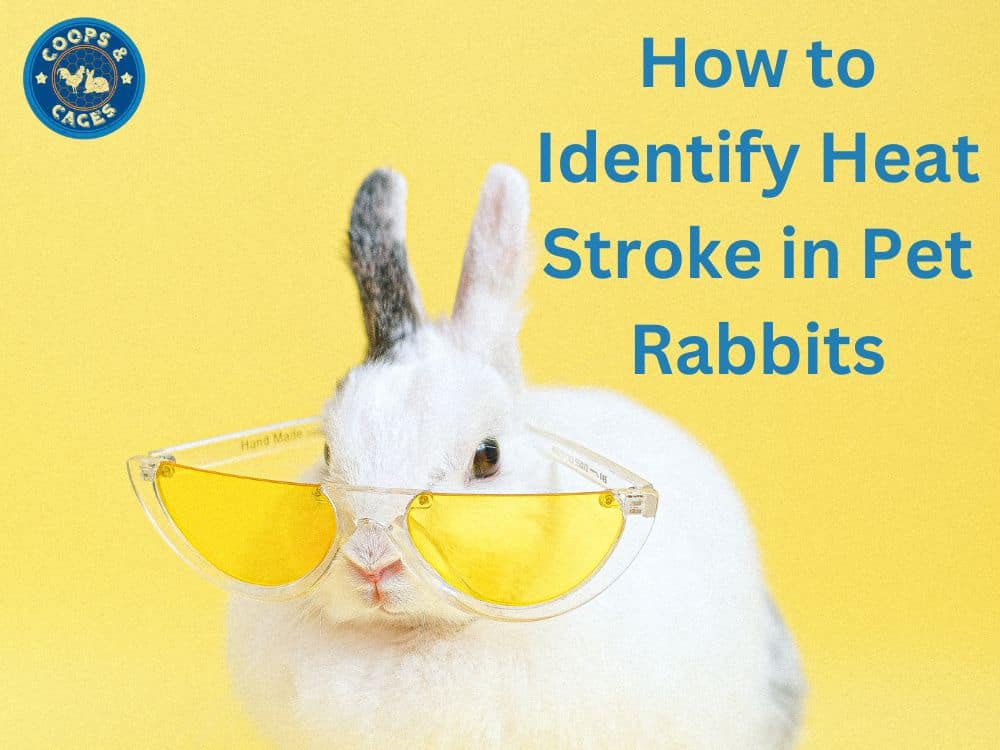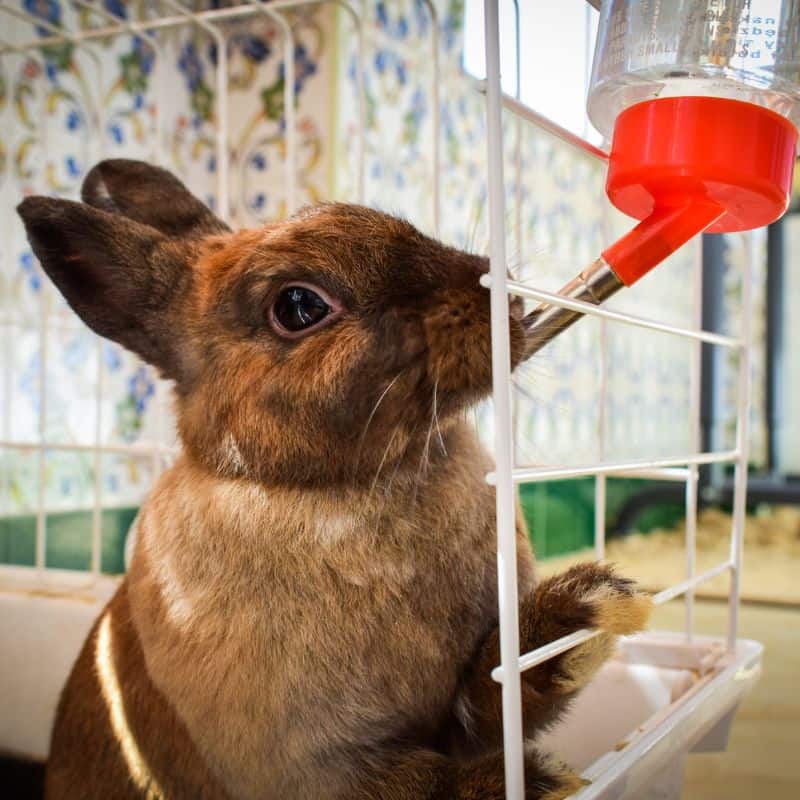Rabbits
How to Identify Heat Stroke in Pet Rabbits
Pet rabbits have limited ways to get rid of body heat. They can’t pant like dogs or grab an icy cold drink like humans. For that reason, they are at high risk for heat stroke. But since they’re good at hiding stress and other health-related concerns, they don’t always appear unwell. That means, as a rabbit owner, you have to be extra vigilant to recognise signs of trouble in your pets.
Since heat stroke can happen suddenly, especially when rabbits are exposed to direct sunlight, it’s crucial to be vigilant for signs and take proactive steps to prevent further complications.
Definition of Heat Stroke
Heat stroke occurs when a rabbit’s body temperature rises to dangerous levels due to prolonged exposure to high temperatures or humidity. This condition can be life-threatening and requires immediate veterinary attention.
During these times, the rabbit’s body is not capable of dissipating heat. As a result, the body temperature rises. This problem is common among rabbit breeds with long hair like Angoras.
Because of what it can do, heat stroke is considered an emergency. This condition can be life-threatening and requires immediate veterinary attention.
Signs and Symptoms
The first signs of overheating in rabbits are:
- Excessive panting
- Drooling
- Wet nose
- Reddening of the skin around the ears.
As they become warmer, they may also show signs of confusion and struggle with breathing.
If the situation worsens, rabbits may exhibit abnormal behaviours, and withdraw from interactions with you. In severe cases, they may even experience convulsions and slip into a coma, potentially resulting in death. Therefore, it’s crucial to promptly contact a veterinarian at the first sign of any of these symptoms.
Temperature Concerns
When temperatures start to rise, our bunny friends are more likely to suffer heat stroke due to their limited ability to regulate body heat.
Ideally, a rabbit should be housed in a rabbit hutch or enclosure with a temperature of no more than 15-20 degrees Celsius with low or no humidity. Anything higher can lead to issues like respiratory ailments.
Once the thermometer hits closer to 30 degrees Celsius, it’s critical to be extra cautious, as this is when your furry companions are most vulnerable to heat stroke and should be brought inside to a cooler location.
Preventing Heat Stroke
With these simple strategies, you can ensure your rabbits stay safe and comfortable even during scorching temperatures:
Provide ample shade: Make sure your rabbit’s home offers plenty of shade, especially on those sweltering days. Providing them with a rabbit hutch in a shaded area can offer them a cool retreat from the heat.
Keep them cool: Provide cooling options such as frozen water bottles wrapped in towels for them to lean against or ceramic tiles for them to lie on.
Proper ventilation: Ensure good airflow in your rabbit’s living area to prevent heat buildup.
Avoid direct sunlight: Keep your rabbits indoors or provide shaded areas outdoors to prevent them from overheating.
Hydration: Ensure they always have access to fresh, clean water to stay hydrated.
Monitor the temperature: Monitor the temperature closely, especially when it exceeds 30 degrees Celsius, and consider bringing them indoors into an indoor enclosure or penned area.
Limit exercise: Avoid strenuous activities during the hottest parts of the day and provide opportunities for exercise during cooler times.
Regular grooming: Maintain their grooming routine by regularly trimming their fur and keeping it free from mats to aid in their comfort and temperature regulation.
Monitor behaviour: Pay attention to any signs of distress or overheating and take immediate action if necessary.
Consult a veterinarian: Seek professional advice on additional measures you can take to keep your rabbits safe during hot weather.
Treatment for Heat Stroke
When you are dealing with heat stroke, every second counts. If you suspect your pet rabbit is suffering, act swiftly.
Begin by gently misting them with water and relocating them to a cool area, such as a shaded rabbit hutch or a room with air conditioning. Placing them on a cool ceramic floor can also aid in lowering their body temperature.
Next, cover their body with a damp, cool towel and apply ice cubes to their outer ears and head to further help them cool down. Simultaneously, contact your veterinarian without delay. They may recommend administering saline fluids to aid in the recovery process.
Remember, prevention is key. By being proactive and knowing how to respond, you can significantly reduce the risk of heat stroke for your rabbit.
Finding a Good Veterinarian
While all veterinarians can address cases of heat stroke, pet rabbit owners need to choose a good vet. If you’re new to pet ownership, seeking recommendations online or through word-of-mouth from fellow rabbit owners can be invaluable. They often have firsthand experience and can provide reliable suggestions for the best veterinarians in your area.
When transporting your rabbit to the vet clinic, it’s crucial to remain vigilant and attentive to your bunny’s condition. Even a small misstep can exacerbate the situation. Ensure your rabbit’s head is positioned flat and their neck remains straight to keep their air passages open and aid in breathing.
Ian’s Wrap
While the methods mentioned above can help rabbits recover quickly from heat stroke, prevention is always preferable.
Given rabbits’ susceptibility to heat, it’s vital to shield them from high temperatures as much as possible. Providing a comfortable and shaded rabbit hutch with ventilation is one of the most effective ways to prevent heat stroke and ensure your furry friend’s well-being.






